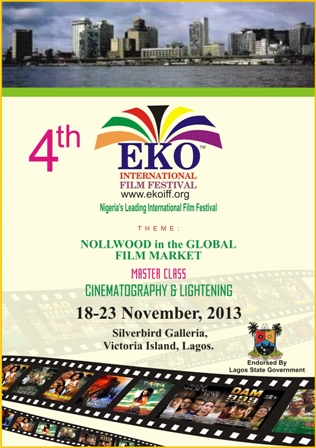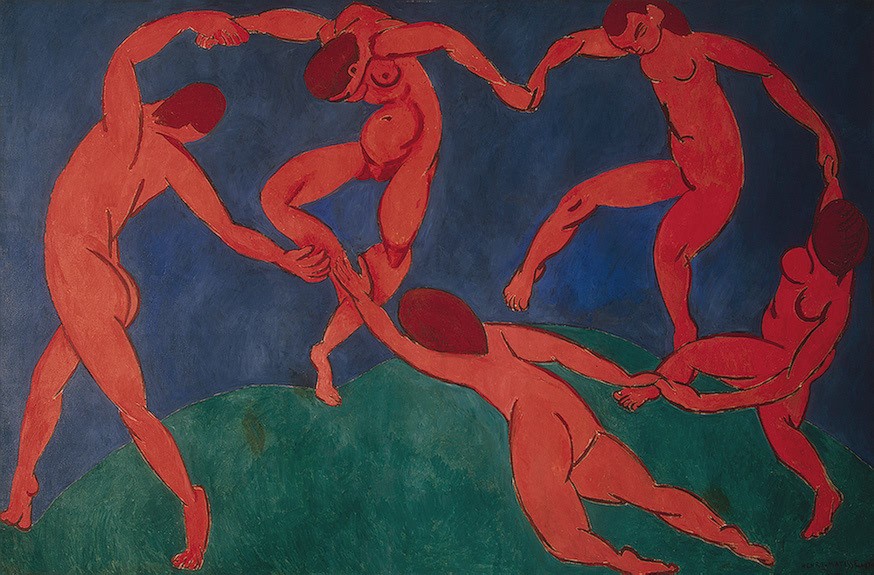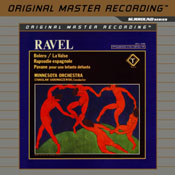![Zazzabi]()
I’m going to do something today that I haven’t done for a long time on this blog, but which is something I originally started this blog to do, and that is to put up some work in progress–a song that I am working on right now in my dissertation–and ask for help from Hausa speakers in correctly translating and transcribing it.
Zazzabi (Fever) directed by Sha’aibu Idris Belaz and produced by Auwalu Madaki (story by Salisu Buldoza) for Sa’a Entertainment in 2005 is one of my favourite Hausa films. And the first song in the movie, sung by Sadi Sidi Sharifai, Ikram Garba Ado, and Sa’a A. Yusuf, has obsessed me since 2006. Yes, that long. (I’ve mentioned and posted it in previous blog posts in November 2009 and just the other day in October 2013). It must have been pretty popular with its audiences too, because the songwriter Sadiq Usman Sale gained his industry nickname from the film: Sadiq Zazzabi.
It’s a story full of twists and turns, so I can’t talk too much about the plot here, in case there is someone who ever wants to see the film (if you can find it anywhere). But, as it becomes clear by the 6th verse of the song, it is a film about love and HIV, but it is no NGO film (thank God). HIV is one of the things that complicates the love between the characters in the love triangle between the characters played by Sani Danja, Mansura Isah, (who ended up marrying in real life) and Ibrahim Maishunku. (Because the characters played by Sani Danja and Mansura Isah are not named in the film, I call them Sani and Mansura here. The character played by Ibrahim Maishunku is named Salim in the film.)
What I LOVE about this song is the ambiguity of the word zazzabi (fever). It can be used in the metaphoric sense as a fever of love, and that is the sense in which the audience would most likely initially interpret word. In Ado Ahmed Gidan Dabino’s bestselling novel In da So da Kauna, for example, the young lover Muhammad writes that he is fleeing Kano to Kaduna
![Part 1 of Ado Ahmed Gidan Dabino's bestselling novel In da So da Kauna]()
Part 1 of Ado Ahmed Gidan Dabino’s bestselling novel In da So da Kauna
because he has been separated from his sweetheart Sumayya, “Ciwon sonta ne ya sa ba zan zauna ba/The sickness of loving her is the reason I won’t stay” (part 1, 85). Sumayya sings on a cassette to Muhammad, that ”In na tuna ka sai na farka daga barci na,/ Ciwon so ya sanya wannan ba komai ba/If I remember you I wake from my sleep/ The sickness of love makes it nothing” (part 1, 71). When she dreams that Muhammad has been killed in an accident she sings, ”Ciwon so shi zan kashe ni/ The sickness of love will kill me“[or The sickness of love will make me kill myself] (part 1, 87).
However, the word “zazzabi” can also be used literally here, as a literal fever. Indeed it is when Sani complains about a fever that Mansura suggests he go for a medical check-up–a checkup during which he tests positive for HIV. The song thus layers a literal meaning of the “disease of love” on top of a metaphoric usage, creating a striking and disturbing image of the dangers love brings not only the heart but the body. In Verse 6, Sani comes out and says “Kanjamau cutar a jikina. Lafiya bata dawowa/ AIDS is the disease in my body. Health will not return.”
My attempts to transcribe the song (from the video below) and translate it– the transcription file on my computer dates back to 2009–however, has made me painfully aware of how much more Hausa I still need to learn. Of course, the poetic language of the song makes it a bit more difficult to transcribe than ordinary language. I’ve been sitting here with the R.C. Abraham dictionary, the Bargery dictionary, and the Hausa-Hausa dictionary published a few years ago by Bayero University, sometimes wondering if I have even divided the words correctly when I transcribed–or if the words I have written actually exist. So, I would love help from Hausa speakers and readers in checking 1) the transcription of the words of the song, 2) my translation. As I get corrections, I will try to make corrections on this post. At this point, I am not trying to be very literary in my translation–although I did translate “kauna” as “passion,” even though I know that “kauna” has a much milder connotation, because I felt it fit with the overall meaning of the song. For the most part, I just want it to be accurate. After I feel I have an accurate translation, I may try to make it sound more like poetry in English. But mainly, right now, I want a working translation that I can feel confident working with as I write about the song. At the moment, I probably don’t have the room to include an in depth analysis of the entire song in my dissertation–I’m using the refrain and chorus, which I understand fine. But I’m thinking I’d like to write a separate article on the entire song and the film at some point, and any suggestions people can give me here will help me work towards that goal.
UPDATE: 10 November 2013. Anas Musa just sent me some amazing corrections to my transcription via email, and suddenly it all begins to fall into place. I will make his corrections on the transcription here and keep working on the translation. I am so grateful. He heard words and expressions that I just couldn’t quite get like kwarjini and kamani and furucina and kudurina and burin ruhina and dimaucewa and gane batuna and jin lafazina and akwai uzurina and gurbi and kulli yaumin and hangena and the whole proverbial expression “Mai guri ya zo gurbinsa shinfidarka ka zo ka nade ta” and don in zam in ganta and kuwa ya cancanta and hawaye (instead of ta waye) and Gashi na yi biyu ko daya (rather than Ga shi na bude bako) and Wayyo kaina (rather than Wayyo Allah). As you can see he’s made a huge difference! I’m still working on the translation. It’s rough but a lot cleaner now that I can actually hear what words they are saying.
I will post the video and my transcription below that. The cinematography is rather grey and uninspiring, but the song is brilliant. Please note that the video is included in this blog post as part of fair use policies for review purposes:
Zazzabi
Fever
by Sadiq Usman Sale (ie. Sadiq Zazzabi)
Refrain:
Sani: Zazzabi ya sauka jikina, Zazzabi ciwo mai zafi, Ciwon so, ciwon kauna,
A Fever has come to my body, Fever so hot. Fever of love, fever of passion,
Salim: Zazzabi shi ne a jikina
A Fever is what is in my body
Female back up Chorus: Zazzabi ya kama masoya, zazzabi ciwo mai zafi. Ciwon so. Ciwon kauna. Zazzabi ciwo mai kuna.
A fever has caught the lovers, A fever so hot,Fever of love, fever of passion, A fever that burns
Mansura: Zazzabi ya sauka jikina, Zazzabi ciwo mai zafi, Ciwon so, ciwon kauna, Zazzabi shi ne a jikina
Fever has come to my body, Fever so hot. Fever of love, fever of passion, A Fever is what is in my body
Verse 1
Sani: A gaskiya ciwon kaunarki, a tuntuni shi yake kamani.
Truly, lovesickness for you captured me long ago.
Female backup Chorus: Zazzabi ciwo mai zafi
Fever so hot
Sani: In na zo, wurin ji a gareki. Kwarjini shi yake kamani.
If I come to hear it from you. I am overcome with shyness.
Chorus: Zazzabi ciwo mai zafi
Fever so hot
Sani: Ina tsoron furucinki, shi ya sa jinkiri a gareni
I fear what you will say, that’s what made me delay
Chorus: Zazzabi ciwo mai zafi
Fever so hot
Sani: Kin ji, dai, dukkan kudurina, ya a bar burin ruhina
Hear my great passion for you, oh my deepest soul’s desire.
Chorus: Zazzabi ya kama masoya, zazzabi ciwo mai zafi. Ciwon so. Ciwon kauna. Zazzabi ciwo mai kuna.
A fever has captured the lovers, A fever so hot. Fever of love. Fever of passion. Fever of scorching heat.
Verse 2:
Sani: Ki amince da ni, don Allah, kar ki sa ni na dimaucewa.
Trust me, for God’s sake, don’t let me lose my mind.
Chorus: Zazzabi ciwo mai zafi
Fever so hot.
Sani: So da kauna abin girmamawa, kin ga shine tushen kowa….
Love and passion is an inestimable thing, you know it is the root of us all…
Chorus: Zazzabi ciwo mai zafi
Fever so hot.
Sani: Na nutso kogin kaunarki ko dagowa bana yowa
I am drowning in a river of your love, I can’t come up out of it.
Chorus: Zazzabi ciwo mai zafi
Fever so hot.
Sani: Nai jiran amsa a gareki don kuwa duk kin gane batuna.
I wait for your answer, so that you understand all that I’ve said.
Chorus: Zazzabi ya kama masoya, zazzabi ciwo mai zafi. Ciwon so. Ciwon kauna. Zazzabi ciwo mai kuna.
A fever has caught the lovers, a fever so hot. Sickness of love, sickness of passion, Fever a sickness that burns.
Verse 3:
Mansura: Na ji dukka batunka bayani, to, tsaya don jin lafazina.
I’ve heard all, all of what you’ve said. To, stop now and listen to me.
Chorus: Zazzabi ciwo mai zafi
Fever so hot.
Mansura: Tun ada, tun tun na fahimta kai kana kauna a garena.
For long, I’ve understood that you love me
Chorus: Zazzabi ciwo mai zafi
Fever so hot.
Mansura: Gaskiya ni da kai soyayya, ba na yi don akwai uzurina.
In truth, I have my reasons not to agree to love between me and you.
Chorus: Zazzabi ciwo mai zafi.
Fever so hot.
Mansura: Babu gurbi cikin ruhina sam… Salim shi ne a gabana
There’s no place in my heart. Salim, hes the one in my future now.
Chorus: Zazzabi ya kama masoya, zazzabi ciwo mai zafi. Ciwon so. Ciwon kauna. Zazzabi ciwo mai kuna.
It’s a fever that captures lovers, Fever so hot. Sickness of passion. Sickness of love. Fever a sickness that burns.
Verse 4
Mansura: Alkawari, ni da shi mun dauka duk wuya bama canzawa.
It’s a promise he and I have made each other. No matter the difficulty we won’t change.
Chorus: Zazzabi ciwo mai zafi.
Fever so hot.
Mansura: Son Salim, shi ne a gabana, kulla yaumin na ke ta tunawa
My love for Salim is before me, I’m always thinking [of him].
Chorus: Zazzabi ciwo mai zafi
Fever so hot.
Mansura: So da kaunarsa ke ta bugawa zuciyata suke rayawa.
Love and passion are throbbing my heart to life again.
Chorus: Zazzabi ciwo mai zafi
Fever so hot.
Mansura: Son Salim shi ne hangena har ke loda harkar ganina.
Love for Salim is what I see from a far, it fills my vision.
Instrumental Interlude
Refrain
Salim: Zazzabi ya sauka jikina, Zazzabi ciwo mai zafi. Ciwon so, ciwon kauna, zazzabi shi ne a jikana.
A fever has entered my body, A fever so hot. A sickness of love, a sickness of passion. A fever, that’s what’s in my body.
Mansura: Zazzabi ya sauka jikina, Zazzabi ciwo mai zafi. Ciwon so, ciwon kauna, zazzabi shi ne a jikana
A fever has entered my body, A fever so hot. A sickness of love, a sickness of passion. A fever, that’s what’s in my body.
Chorus: Zazzabi ya kama masoya, zazzabi ciwo mai zafi. Ciwon so. Ciwon kauna. Zazzabi ciwo mai kuna.
A fever has captured the lovers, a fever so hot. A sickness of love, a sickness of passion. A fever of scorching heat.
Verse 5:
Salim: Mai guri ya zo gurbinsa shinfidarka kazo ka nade ta
The longing lover has met his fate. Here’s your mat, come roll it up.
Chorus: Zazzabi ciwo mai zafi.
Fever so hot.
Salim: Ga ni gefen abar kaunata, in tsaya don in zam in ganta.
See me here by the side with my heavy love, I’ve paused here to stay and see her.
Chorus: Zazzabi ciwo mai zafi.
Fever so hot.
Salim: Zo mu je lambunmu na kauna, mu shige, don kuwa ya cancanta
Come let’s go to our garden of love, let’s enter it, because it is befitting.
Chorus: Zazzabi ciwo mai zafi.
Fever so hot.
Salim: Kai ku sai ka tsaya, bisa nan gun ke da shi, ku yi bankwana
You just have to stop all the familiarity you have with him, you must say goodbye
Chorus: Zazzabi ya kama masoya, zazzabi ciwo mai zafi. Ciwon so. Ciwon kauna. Zazzabi ciwo mai kuna.
Fever has captured the lovers. Fever so hot. Fever of love, Fever of passion. Fever of scorching heat.
Verse 6
Sani: Yau ina kuka da hawaye sai takaice nake ta tunawa.
Today I am weeping hot tears, I keep thinking of my loss…
Chorus: Zazzabi ciwo mai zafi
Fever so hot.
Sani: Ga shi na yi biyu ko daya babu rayuwata nake tausayawa
See, I have nothing, I pity my life.
Chorus: Zazzabi ciwo mai zafi
Fever so hot.
Sani: Kanjamau cuta a jikina. Lafiya bata dawowa
AIDS is the disease in my body. Health will not return
Chorus: Zazzabi ciwo mai zafi
Fever so hot.
Sani: Rayuwata tana watakila mutuwa ko yau a wurina
I face the end of my life, maybe even today.
Chorus: Zazzabi ya kama
Fever has captured
Sani: Wayyo kaina,
Chorus: masoya, zazzabi ciwo mai zafi.
Lovers. Fever so hot
Sani: Wayyo Allahna
Chorus: Ciwon so. Ciwon kauna. Zazzabi ciwo mai kona.
Fever of love. Fever of passion. Fever that burns.
Refrain
Mansura: Zazzabi ya sauka jikina, Zazzabi ciwo mai zafi. Ciwon so, ciwon kauna, zazzabi shi ne a jikana.
Fever has come to my body. Fever so hot. Fever of love, fever of passion, Fever is in my body.
Sani: Zazzabi ya sauka jikina, Zazzabi ciwo mai zafi. Ciwon so, ciwon kauna, zazzabi shi ne a jikana.
Fever has come to my body. Fever so hot. Fever of love, fever of passion, Fever is in my body.
Chorus: Zazzabi ya kama masoya, zazzabi ciwo mai zafi. Ciwon so. Ciwon kauna. Zazzabi ciwo mai kuna.
This fever has captured the lovers. Fever so hot. Fever of love. Fever of passion. Fever that burns.
![]()
![]()





































































































